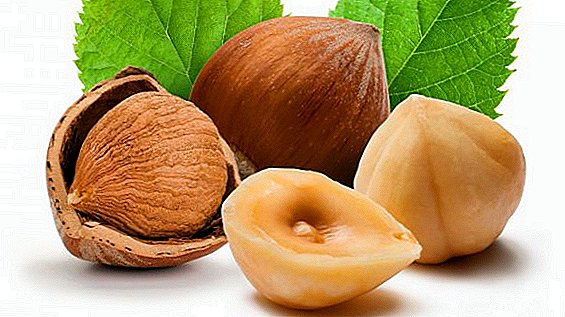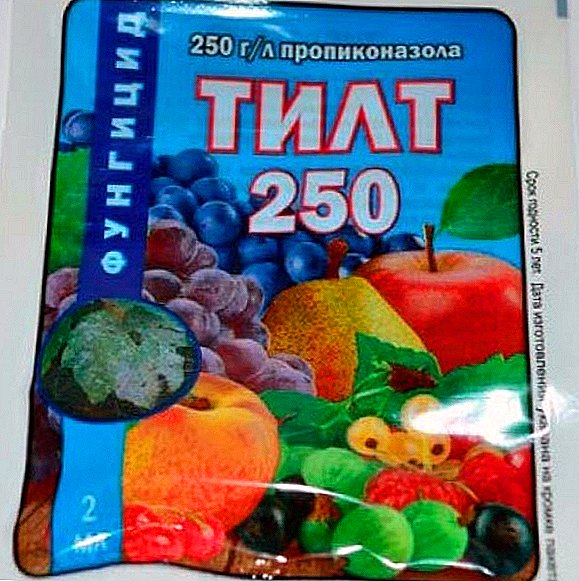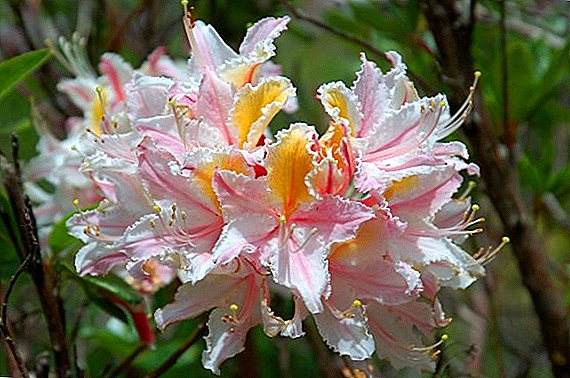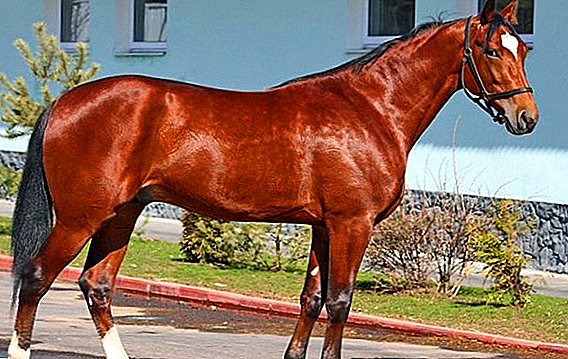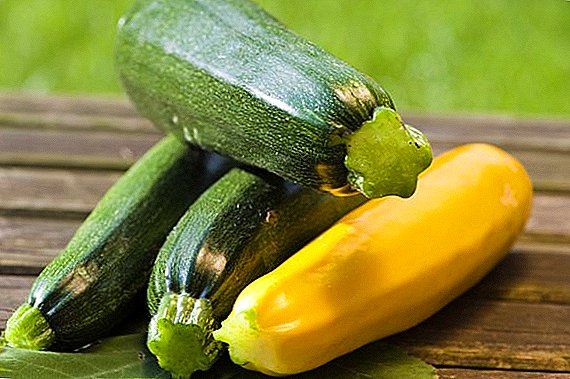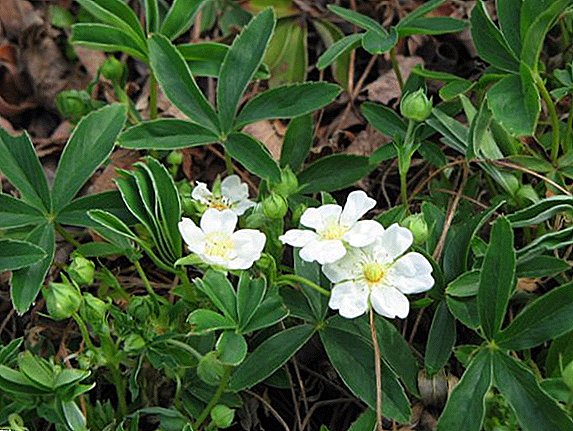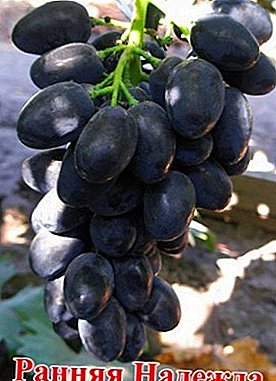
Grape Hope Early - A young variety, but has already become popular.
First of all, beginning gardeners loved him, who did not want to spend a lot of effort on the grapes, but not against boasting beautiful bunches and eating berries.
He really is not capricious of the soil, does not require sophistication in agricultural technology, is not afraid of bacteria. What else is known about him?
What kind is it?
Nadezhda Early - a hybrid subspecies of black grapes with very early ripening. The berry has ripened by the beginning of August, but is well preserved on the bush. Therefore, it is usually left to hang a little longer - so that sugar has accumulated. The variety has a very good demand in the market - both in saplings and in fruits.
Among the black varieties are known such as Moldova, Bull Eye and Black Emerald and Black Crow.
The berries are unusually well stored and transported, do not crack, do not spoil, do not rot.
In addition, the clusters are extraordinarily beautiful and, hanging on pillars and hedges, delight the eye of all who pass. It is used both in fresh form and in liqueurs, jams, compotes, jams; also in bouquets of table red wines.
The beauty of the berries can also boast Romeo, Chocolate and Baikonur.
Grape Hope Early: variety description
The bush is large. Clusters are large, 700-100 g, conical, moderately friable, winged. By pea not inclined. The berry is large, about 14 g, oval, elongated, dark blue with a characteristic white lunar bloom.
The skin is very dense, of moderate thickness, eaten. The flesh is fleshy, juicy, with a simple, but not primitive, pleasant taste. The matured shoot is greenish-brown, into the red.
The leaf is medium in size, bright green, rounded, mid-dissected. The stem is thick, strong, light green, relatively long. The flower is both male and female.
Both Helios, Gordey and the Descendant of Rizamata are distinguished by bisexual flowers.
A photo
Photos of grapes Hope Early:




Breeding history
The variety was born thanks to the works of the national breeder A.A. Goluba, in Ukraine. "Parents" - AIA and Nadezhda Azos. The breeder set himself the task of growing a sort of “workhorse” that would bear fruit consistently and qualitatively, would not be capricious to the conditions of the environment and would not be afraid of either cold, wasps or rot.
It must be said that Golub achieved his result - that is why Nadezhda Rannaya quickly spread throughout the southern and central regions.
Specifications
The variety has a high yield, therefore it is necessary rationing. Pruned six to eight eyes, leaving 35 on the bush. Os is practically not afraid. Frost resistance - 23-24 degrees Celsius.
High resistance to bacteria - powdery mildew (oidium and mildew) and to various types of rot, slightly lower - to phylloxera.
Also resistant to parasites. Needs shelter for the winter. Well perceives additional care in the form of irrigation and regular fertilizing, but not those with a large dose of nitrogen.
Diseases and pests

It was not possible to invent a variety that would be resistant to birds. Therefore it is necessary to enclose the vineyard with a strong mesh canopy.
In no case, no rope network, as it will serve as a snare. You shouldn’t believe those who are praising the special brightly colored balloons and posters - they only seem dreadful, and the birds will quite soon realize this.
Phylloxera. This attack can attack very early. Against it, the vineyard is sprayed with combustible carbon disulfide with a dose of three to four hundred (but not less than 80, with a lower dose of the parasite not to drown out) cubic centimeters per square meter.
It is tough, but necessary, because, generally speaking, the treatment for phylloxera is supposed to be quarantine - the diseased parts are uprooted, and if they only managed to eat the leaves, they are cut off and burned. But in the case of spraying the bush will have a hard time - carbon disulfide is also destructive for it.
The probability that the felt mite will attack, it is a grape pruritus, is small, but still it is better to err. The benefit of this parasite is able to skillfully hide and can not detect it immediately.
He winters safely in the kidneys, which then eats - however, this is not the end of his appetites. So, if you do not notice itching, it threatens the entire vineyard.
With grape pruritus struggling by spraying the bushes with chemicals Omait, Talstar, Neoron, Bi-58.
With regard to common diseases of the grapes, the variety does not hurt prevention against anthracnose, bacteriosis, rubella, chlorosis and bacterial cancer.
Hope Early - a young and very unpretentious variety, with which, in fact, all the duties just a joy. They do not take a lot of time and effort, but they will allow you to hone your skills and gain experience, without which serious viticulture is impossible. On the table, fresh, fragrant brushes will not be translated, and in the cellar - homemade preparations and wine.


